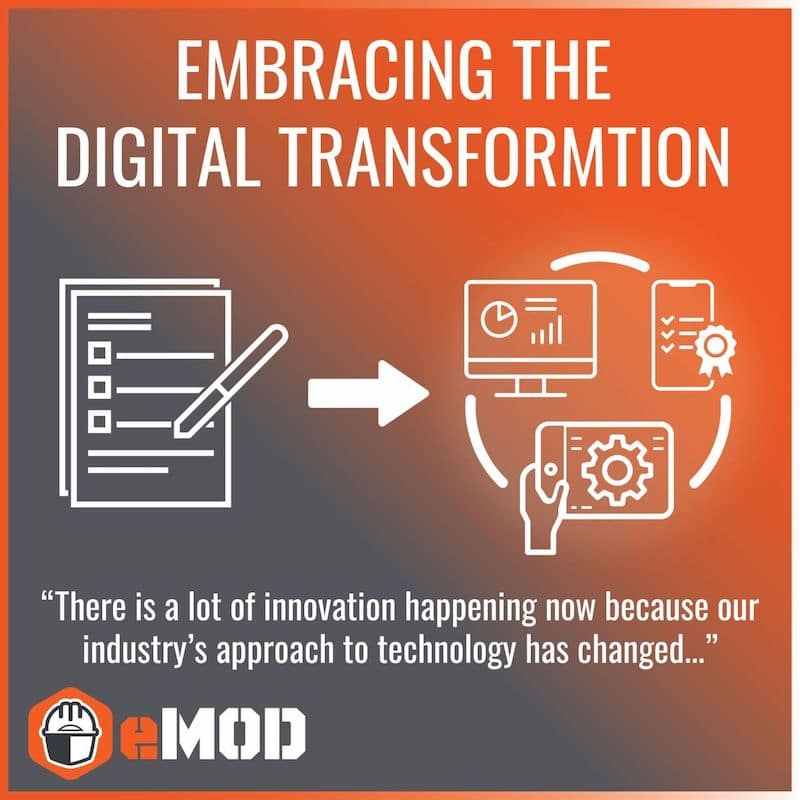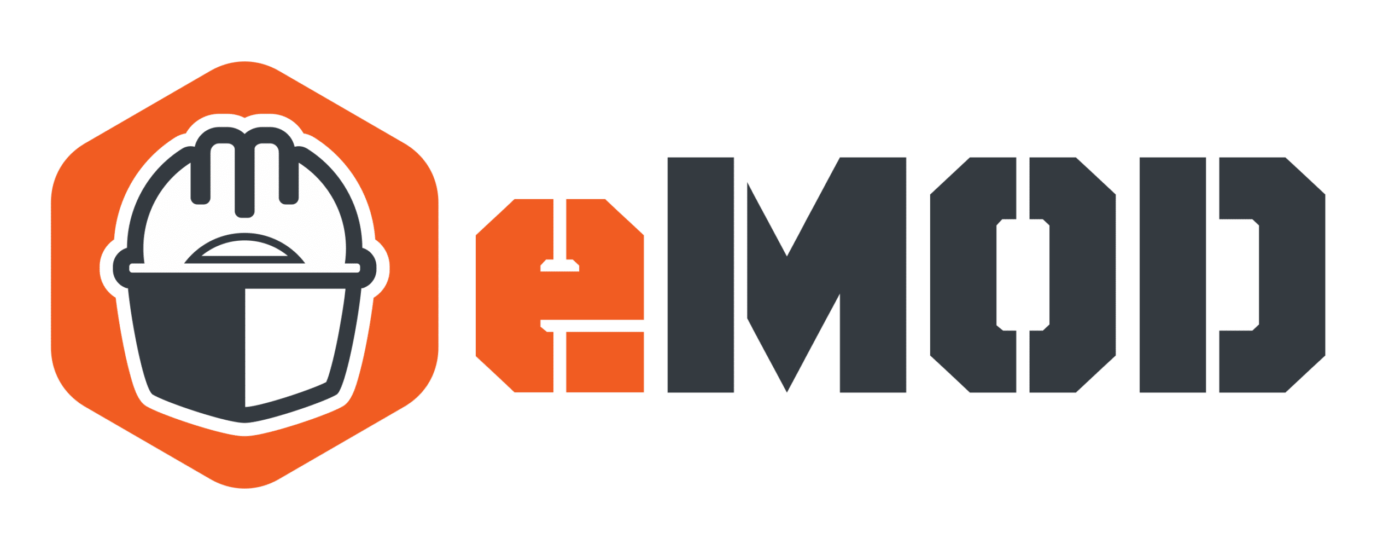
New digital tools promise undeniable benefits. But implementing technology in an antiquated industry isn’t always easy
By Shane Flanagan
They call our industry “construction” because, ultimately, we’re builders. We use our hands and bodies to wield tools and erect magnificent structures. We’re not exactly known for sitting in offices and pecking away on computer keyboards. And we’re certainly not leading the pack of industries when it comes to digital transformation.
But make no mistake. We are transforming. And it’s an exciting time for technology evangelists like me — there is a lot of innovation happening now because our industry’s approach to technology has changed.
Instead of being force-fed re-skinned technology built for other industries, new purpose-built tools are being developed specifically for construction, solving long-standing pain points and leveraging digital technology to help improve how we do our jobs. And keep us safer.
These tools include our own product, the eMOD Safety App. Now an independent company, eMOD was originally born out of need from within Dome Construction. While packed with features, the app’s primary purpose is to digitize the previously painful paper-based process of complying with safety regulations. eMOD puts all the safety documentation in one place — in the cloud — accessible by anyone involved in a project via an iOS app or the web.
eMOD is just one example of the digital transformation in construction — technology that now extends well beyond the front office and into the field. Many tools are transforming paper-based or offline processes and bringing them directly to the job site via mobile devices that construction workers of all types and trades are using today.
While these digital tools offer compelling benefits, deploying them is rarely simple. Because the tools themselves are only part of the digital transformation equation. In order for our industry to digitally transform, our people need to embrace these changes. They need to adopt the tools and make them a part of their daily routine.
For anyone whose role, officially or unofficially, involves advocating for or implementing digital technology, here’s some advice to consider:
Don’t be afraid of digital tech. The benefits will outweigh any pain
First things first, don’t be afraid of pushback or even failure. You’ll inevitably come across workers with decades of experience that are resistant to change. Digital transformation is happening in our industry — perhaps more slowly than others, but it’s happening. And for good reason. Beyond just specific applications, digital transformation in construction offers tremendous benefits:
To name a few:
- Reducing paper documents that can be lost.
- No more hauling massive binders from site to site.
- Key information can be safely stored in one place (ideally the cloud).
- You can efficiently share time-sensitive docs — and get digital signatures in moments.
- Transparency: Key information can be easily shared with more people, and across broader teams.
If you’re trying to drive digital transformation or any kind of change, expect challenges and difficulty. But don’t let that deter you. Have conviction and know that you’re (hopefully) doing it for good reason.
That said, before you roll out any new tool, make sure you really understand your audience…
Have empathy for your audience
Not too long ago, I talked with a recently promoted construction superintendent that had 35 years in trades, mostly as a metal stud framer foreman. He was very excited about learning and using technology as part of his new role — yet openly admitted that he had no experience and a lack of knowledge about construction technology.
I was fortunate that he shared this so openly with me. And as someone who often leads technology projects, it’s a great reminder of how important it is to listen. And to have empathy. Understanding someone else’s needs and abilities is crucial to successfully rolling out any technology. It’s important because it affects the kinds of training programs put in place. But even before you get there, you need to help people understand the “why.” Construction team members need to know how any new technology will impact their role — and why it will positively impact their day-to-day jobs, in addition to helping the overall team.
Speaking of benefits…
Make sure the tech you’re pushing makes sense for everyone
Like many industries, COVID-19 has been a catalyst for adoption of different technologies that help our projects move forward while reducing some risky in-person interactions. New challenges have certainly emerged with the pandemic, too. With all of these changing needs, it’s more crucial than ever to understand how different roles within a construction project have shifted.
Technology evangelists like me need to be continually talking to our base — and understanding new and old pain points that we can help solve. The best technology champions are inherently really good relationship builders. And we leverage our relationships to understand — to put ourselves in someone else’s work boots and see how a new tool will change their day-to-day job.
Related, we need to anticipate how solving one problem might create a new one. Ultimately, if the digital technology we’re proposing doesn’t make the jobs easier for the intended audience — or if it only benefits the front office — then we should look elsewhere. After all, new technology can’t just be somebody back in the office who’s saying, “You should use this.”
And as long the tool does truly help the audience, then getting buy-in is that much easier. It should go without saying — but if people understand that a new tool will actually help them, they’ll be that much more motivated to learn it.
Commit to training — in different forms
Construction workers run the gamut in terms of comfort level with technology. Field workers who have been in the industry for decades may not be as sophisticated as those coming out of college and trained for management positions.
Because of this diversity, it’s important to have a solid understanding of your organizational culture, and the technical capabilities of your existing personnel. You also have to be able and willing to invest in them — and not only when you introduce a new technology. Upfront training is important — and it needs to be continually reinforced.
It’s also important to provide a safe space for people to work through challenges they’re having with new tech. It’s human nature to avoid asking questions for fear of being perceived as incompetent. At Dome Construction, we use our daily toolbox talks as a low-stakes opportunity for anyone to ask questions and discuss experiences with new technology. We also provide office hours so that workers can ask questions without the audience.
Don’t just train — build habits
When rolling out a new tool, simply training people to use it isn’t enough. You need to reinforce that training and get them into the habit of using it. The best way to do this is to make it part of a daily routine to complete different tasks.
For example, within the eMOD Construction Safety Software, trade foremen create daily safety plans, identifying the tasks, steps, and hazards that the superintendent must review for accuracy. This might include JHAs (job hazard analysis) and other important compliance information. And as they start work for the day, teams may review these documents together as another reminder they need to use the app.
So during a sub-huddle every morning, I may say, “Hey, has everyone checked-in on eMOD? Does everyone have their COVID-19 compliance done?”
As a leader, referring to it and using the app during my regular meetings reinforces to my team that they should, too.
Think long term
Digital transformation doesn’t happen in an instant. And widespread adoption of any new tool won’t, either. It’s important to have realistic goals for implementing any new technology. Start with a pilot rollout or a small group. Get feedback from early users. And make sure the tool is delivering on its promise before you roll it out to a wider group. In other words, think long term.
Understand your tech stack
Sometimes, new technology works great in isolation — but it doesn’t play well when you implement it alongside your other business systems. The ultimate promise of digital transformation is that all systems are connected — and data can pass through related pieces via APIs or direct data connections.
So, make sure that any new technology plugs into your tech stack. That way, you don’t end up with data silos — and no one can remember which app stores which file. Otherwise, you’re not much better off than the old days, when binders stuffed with paper documents collect dust and get lost in back offices.
ABOUT eMOD
Founded in 2017, eMOD is a team of experienced commercial construction superintendents, project managers, and safety officers from San Francisco-based Dome Construction. Safety is more than our passion; we’ve built a company and a product dedicated to making our industry safer. The eMOD Safety App is designed for the next generation of construction owners, insurance companies, general contractors, subcontractors, and tradespeople. The app includes COVID-19 safety features, such as contact tracing, speedy screening, and jobsite entry, cloud-based documentation, and customizable COVID-19 safety audits.
We not only built the app, we use it every day. Contact us to set up a demo today.
Shane Flanagan is a Senior Project Manager at Dome Construction.

